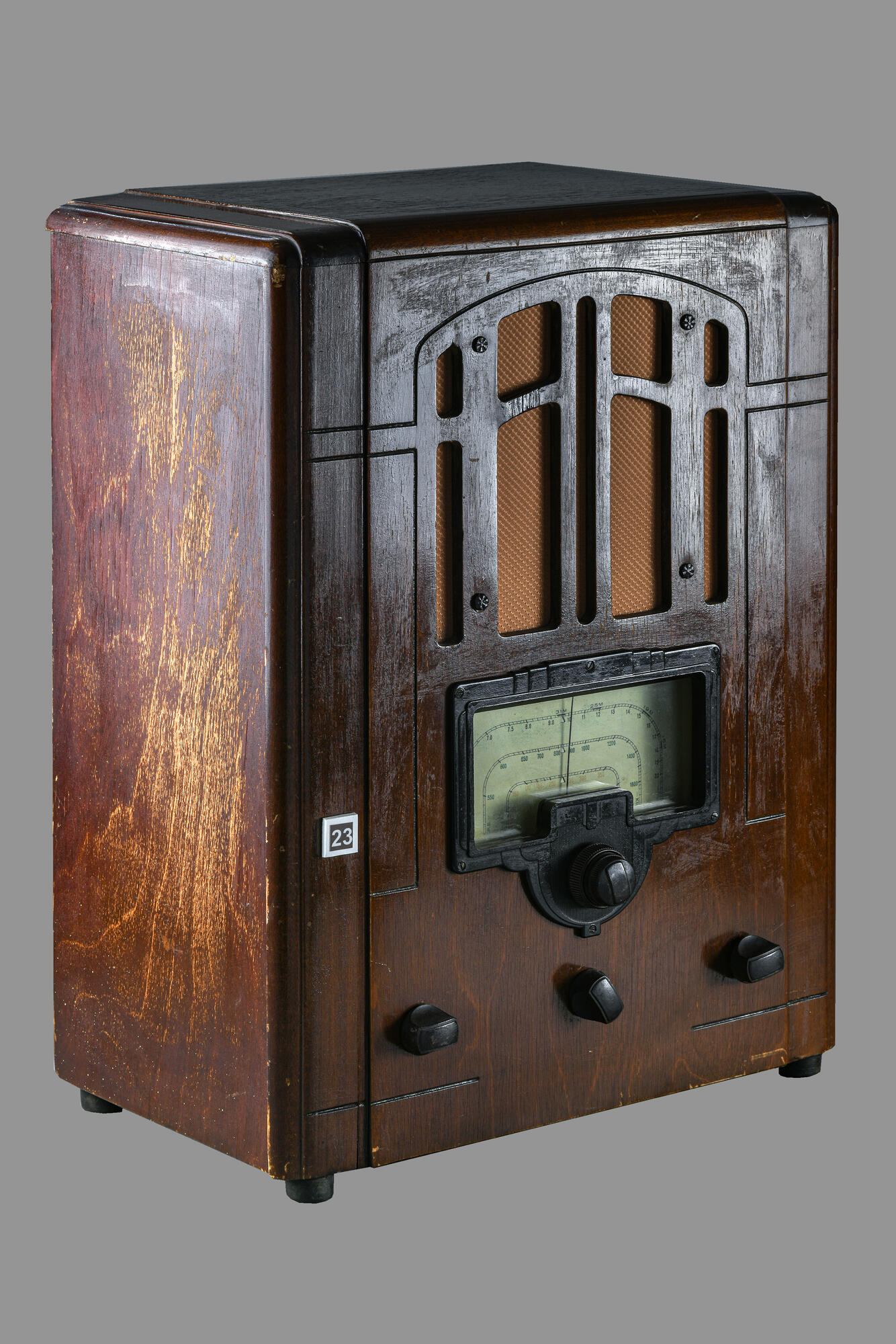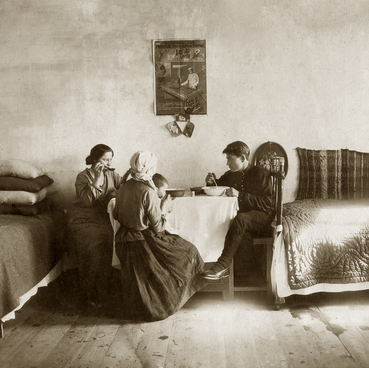Cameras, record players and radio receivers started to be a part of everyday Soviet life during the second half of the 1930’s. They were all considered to be prestigious items and symbols of prosperity. One of these items - a 6N-1 Radio Receiver (that is, a 6 valve radio, model no. 1), produced at the Voronezh Factory ‘Elektrosignal’. It was developed along with the American Corporation RCA, based on the ‘Victor 6T2’ radio receiver. It became the most popular product produced by the factory before the war. It was relatively expensive and intended for wealthy consumers and the elite. This example belonged to a teacher at an Orsk school, Alexandra Mikhailovna Lodcheva.
The radio received three frequency bands. Therefore, the radio’s tuner is split into three ranges: long-wave, medium-wave and short-wave. Switching between frequency bands is done by turning the middle knob at the bottom. Frequency band indicators are triangular, lighting up when the band selector knob is turned. They have a different color for each range. The upper central knob is used for frequency adjustment, whilst on the bottom row the left knob is the on-off switch and tone control, whilst the right knob is the volume control. The radio receiver has an input so it can be used to amplify an external gramophone player.
It is interesting that the receiver’s instructions outline the frequencies for radio stations in the Vatican city, Paris, Rome, Lisbon and others.
A peculiarity of owning a radio receiver in the Soviet Union was that the owner had to register their radios with their home address with the Commissariat of Communications. The first government decree concerning this registration appeared in 1924. A subscription payment was then launched in 1933 for radio receivers. So an owner of a 6N-1 would have to pay 24 rubles a year to use it. Obviously, there were many people who were in no hurry to register their devices. Therefore in 1939, the Council of People’s Commissars introduced a decree of fines for using a radio without owner registration. 20% of the collected fine was distributed to the person who had exposed an unregistered radio user, whilst the remaining 80% went to the central budget.
Four days after the Great Patriotic War began, a new decree was introduced obligating citizens to put their radio receivers into temporary storage until the end of the war. 6N-1 receivers were dismantled and used to produce military radio equipment during the war.
The radio received three frequency bands. Therefore, the radio’s tuner is split into three ranges: long-wave, medium-wave and short-wave. Switching between frequency bands is done by turning the middle knob at the bottom. Frequency band indicators are triangular, lighting up when the band selector knob is turned. They have a different color for each range. The upper central knob is used for frequency adjustment, whilst on the bottom row the left knob is the on-off switch and tone control, whilst the right knob is the volume control. The radio receiver has an input so it can be used to amplify an external gramophone player.
It is interesting that the receiver’s instructions outline the frequencies for radio stations in the Vatican city, Paris, Rome, Lisbon and others.
A peculiarity of owning a radio receiver in the Soviet Union was that the owner had to register their radios with their home address with the Commissariat of Communications. The first government decree concerning this registration appeared in 1924. A subscription payment was then launched in 1933 for radio receivers. So an owner of a 6N-1 would have to pay 24 rubles a year to use it. Obviously, there were many people who were in no hurry to register their devices. Therefore in 1939, the Council of People’s Commissars introduced a decree of fines for using a radio without owner registration. 20% of the collected fine was distributed to the person who had exposed an unregistered radio user, whilst the remaining 80% went to the central budget.
Four days after the Great Patriotic War began, a new decree was introduced obligating citizens to put their radio receivers into temporary storage until the end of the war. 6N-1 receivers were dismantled and used to produce military radio equipment during the war.



